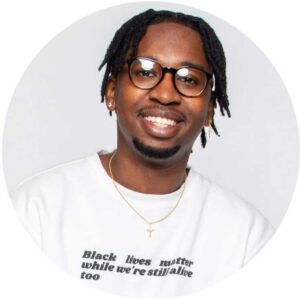Community used to exist because that’s where you showed up and it just “happened.” However now we know community takes effort, it takes intentionality. A few years ago at the 2019 AFA Annual Meeting, we had the opportunity to hear from Priya Parker, author of The Art of Gathering. She posits that it is well past time to reimagine meetings and events by setting better intentions about why we are gathering[1] in an effort to connect and build a better community.
While we agree intention is something that certainly needs to be considered when creating community, we believe there are five key areas that should be taken into account: history, trust, failure, controversy, and consistency. However, we also believe not everything happens as planned, and, as they say, there are two sides to every coin. Rather than gaslighting all the good feelings and great one-off ideas, we are going to provide some insight on things we have seen work well and some things that did not quite make the grade (don’t worry, we’re not going to name specific communities).
Acknowledge & Address Historical Issues
From campus to campus, we continue to hear similar refrains from student leaders.
They just don’t like us.
Why won’t the culturally based organizations partner with us on events?
We don’t really do many things together. But it’s fine.
We want community, we just don’t know how…
Consistently these questions are asked, yet they fail to address the deeper and more uncomfortable issue: the history of our organizations.
At its inception, the institution of higher education was explicitly built for straight, Anglo-Saxon, protestant, wealthy families. Throughout the extensive history of fraternities and sororities, we have built upon this exclusionary reality through our membership criteria,[2] which we continue to struggle with to this day.[3] We have seen more and more walls of marginalization built and reinforced by our collective actions and policies, yet somehow we are expected to ignore this elephant in the room when it comes to building community. Or more accurately, we were not even invited into the room in the first place.
In order to create community, we first must acknowledge these walls exist. This looks like actually educating ourselves on the tumultuous history of our organizations, including the intentional and aggressive exclusion of people of color, LGBTQIA+ folks, and/or disabled folks. Communities that accept different backgrounds and identities are filled with empathy, respect, justice and love; whereas communities that exclude are more prone to division and intolerance.[4]
This looks like intercultural and cross-council conversations about how the historical segmentation of fraternity and sorority life is impacting their community today AND creating strategic plans for how to move forward together.
Strong communities use the past as a roadmap for effectively moving forward intentionally. Weak communities ignore the past in an effort to avoid feelings of guilt or discomfort, which ironically creates environments that breed just that. Honesty and radical vulnerability allow us to move forward, and the strongest communities embody this consistently, no matter how difficult the history is to acknowledge.
Trust Building … & Maintenance
Trust takes time. Trust takes effort. We can all agree trust is the hardest thing to earn while also being the easiest thing to lose. Trust cannot exist without transparency, vulnerability, and honesty. We will spend a little more time in this section than the others, because trust takes more time to build.
Let’s first visit the concept of Trust versus trust. Trust (capital T) invokes being an expert. You were hired in your job because you were the expert and because you deserve that position. You were Trusted in your interview to do the job. Imagine working somewhere that Trusts you to do the job you were hired to do and gets out of your way to let you do it. Now let’s look at trust (lowercase t). This version of trust is akin more to being likable. Students or stakeholders have a vain sense of trust because more effort has been given to being approachable or liked, as opposed to consistently showing up how others need you to – to grow Trust. Sometimes we see professionals more concerned with being perceived as cool by students or too wrapped up in t-shirt color drama (when we all know Comfort Colors wins out every time); this is a shallow version of trust.
Let’s look at this another way (however, before we go too far down the path with this next analogy, we both must admit neither of us has green thumbs and sometimes struggle to keep even plastic plants alive). If you think of Trust-building like gardening, transparency is the potting soil, honesty is the fertilizer, and radical vulnerability is the water with which you consistently nurture the plants. Without these vital ingredients, the seeds will not grow. Trust is similar, and is built over time with the foundations of us creating space for others to be open with their perspectives, ideas, and feelings around their experiences. It is cultivated as people share their truth, with the expectation that we are going to validate their feelings and move forward in a way that respects them. It is showing up, and knowing it’s ok to show up imperfectly. Trust is also compounded by opening ourselves to the point where we share our struggles, our fears, and our mistakes with others, and are not met with vitriol, but empathy and grace.
Trust cannot exist in a vacuum, and can be built best when coupled with vulnerability. Dr. Brené Brown has helped the world better understand the concept of vulnerability and its role in creating better and deeper relationships. The same occurs when building community. The vulnerability a professional exudes could help others open up to share their own stories, helping us create communities built on substance and Trust, not Greek Weeks, t-shirts and event themes. However, if vulnerability is used as a weapon, posturing that we want vulnerability when in reality we don’t care enough about others and only want to make ourselves feel better, doing so can diminish relationships, eroding any and all levels of Trust.
For example, there was a council that decided they were going to intentionally focus on trust-building across their member organizations, and they were going to start with a questionnaire (great first step, if you’re taking notes) to identify if members trusted each other, as well as identify what specific things the council could do to help build trust among organizations. They had great engagement with the survey, and received feedback that there was little trust across members of the council, but they also received many different answers as to how they could build from there.
These members expensed trust in anticipation that the council was then going to follow up on their suggestions and create change. The council did not. They felt overwhelmed by the fact that people said they did not trust them, so they did nothing because of their fear of doing something wrong.
So what do you think happened?
This led to a direct negative impact on their community. The council did nothing with the survey and, as a result, lost even more of their members’ trust.
Creating community takes intentional, consistent, and purposeful effort as a means of building and maintaining trust from members. It takes being radically vulnerable about the fears we have, the expectations we have of each other, and maintaining transparency and honesty as a practice.
Trust is a currency of change, and most organizations naively believe that trust is an infinite resource when it absolutely is not.[5] We have to build it. Also, we have to cultivate and maintain it. Whenever you fulfill your commitment, respect the feedback given, or follow through on your relationship building, the trust that was spent is rewarded with more interest. When you don’t fulfill a commitment, or disregard feedback given from members of the community, that trust is lost.
Be More WTF (Willing to Fail)
Sometimes we stop ourselves before we start out of fear of failure. The best leaders with the best intentions in our communities can burn out before the end of their terms because they tried something new and it didn’t work out and now no one in the community will try anything new. The best department audits with the best ideas and initiatives will often stay on the shelf for fear of rocking the boat too much and causing strife.
And we admit, trying new things can be scary. But we also know that we need to be more comfortable in the uncomfortable. This includes the concept of failure.
What if we told you that you’ve failed hundreds of thousands of times in your life? Ever hit the snooze button? That’s a failure to wake up on time. Ever set a new year’s resolution only to stop it soon after? That’s a failure to follow through on goals. It happens. That’s life. And that’s ok.
Our communities often revert to what’s easy or what’s always been done. Mostly because we are too afraid to try a new approach to something. What if you scrapped your Greek awards and made chapters compete against all student organizations on campus? What if Greek week had no competition whatsoever, but rather infused service and philanthropy into the week (or even if you did that year round)? What if chapters weren’t allowed to do the same event year in and year out? What if headquarters were required to redo their training every year with new content?
We have a feeling some of those questions might have made you a little uneasy. That’s a fear of failure because it’s something new. It’s a new way of thinking or operating. But it is well past time for us to break through this fear of failure and embrace it more. The best organizations tried something new. Amazon used to only sell books. We would never have flamin’ hot cheetos had Frito Lay not been open to new ideas – no kidding – the new movie “Flamin’ Hot” is inspiring by a true story of Richard Montañez who, as a Frito Lay janitor, disrupted the food industry by channeling his Mexican heritage to bring us a snack that causes us heartburn.
We often say our governing councils are self-governing. If you think about it, self governance is an experiment in failure. We do our best to train and advise, but in the end it is up to those in their roles to try new things. When trying new things we might fail, but in failure we learn our best lessons.
Controversy can Drive Community
In creating community, the goals and vision cannot be the expectations of just one facet of that group. In order for successful community building to occur, there must be collaboration.
We think “fine” is okay, and we often settle for “fine” in our communities. Councils get along? That’s fine. Councils rarely talk in general and it’s usually just the leaders, but they keep to themselves and don’t really cause problems? That’s fine. We need to intentionally no longer be okay with “fine.” Priya Parker stated, “The best gatherings learn to cultivate good controversy by creating the conditions for it because human connection is as threatened by unhealthy peace as by unhealthy conflict.”[6]
Knowing our communities inherently have conflict (between chapters, during Greek Week, applying for Greek awards in which the same chapter who figured out how to complete the paperwork keep winning, etc.), it is imperative to find ways to create the above mentioned healthy controversy. Too often we have seen communities get caught up in controversies where trust is eroded, either between councils, between campus administration and chapters, or even between inter/national/regional organizations and campuses.
You can not have any level of controversy in your community without addressing the aforementioned concepts of trust, vulnerability and acknowledging failure. In her 2018 award-winning comedy special Nannette, comedian Hannah Gadsby shares the formula for how she tells a joke, which we feel can be applied to controversy and community: you build tension (controversy) in a way that captures the audience, then provide the release in the punch line and hopefully laughter commences (community).
On the other side, it is easier to not have to deal with controversy. When you avoid controversy (the meme “this is fine” comes to mind), we not only erode trust, but we also create an environment that disintegrates any level of effective communication. Fraternal scholar and advocate Mike McCree said it best in his (summer 2011 Perspectives) article, “the house is on fire and you’re mowing the lawn.”[7] Complacency will be the downfall of our communities, as will the concept of “tradition.” We must invite an air of controversy with civility if we are to create change, especially in our communities.
So how do we do that? We could start by creating a collective vision for what community looks like. Keep in mind it will look different for different spaces and different people. How you start the conversations by approaching others is just as important as what you do with the conversations and information. Be sure you are not doing this to “check the boxes” of collecting input for annual reports or awards. When someone shares a truth with you, start by believing. Too often we might get defensive when given ideas or tasks that contradict our own. Controversy is not comfortable, and it shouldn’t be. Because in that discomfort lies our growth.
Acknowledging the past, creating trust while embodying vulnerability, and failing and trying again; these key pillars of community can all generate tension, but we can begin to be radically vulnerable, acknowledge the beauty in failure, and lean into that controversy to create community.
Now what?
The intent of this article is not to offer a solve, but to start conversations and ask questions. Now is the time to show up for community. It is ok if you slip up, it is ok to show up imperfectly. In the end, people will remember that you showed up to try. It is time to move past creating events in a vain effort to create community. It is time to show up to be in community. It is going to be messy, and that is ok. We must also acknowledge it is going to take work, but just like our friend James Robilotta says, “A synonym for change is work.” So let’s roll up our collective sleeves and get to work to build better communities. We are ready to help however we can.
About the authors:

Qy’Darrius McEachern | @mceachernspeaks: Q is a national speaker + consultant who strives to make his audiences feel positively uncomfortable during speaking engagements/consultations, as he believes that this is a learning feeling that drives growth + change. Q helps organizations take meaningful steps towards fostering true belonging through justice-focused work. He is a proud member of Phi Beta Sigma Fraternity, Inc. and lives near Raleigh, NC with his partner & eight-month old son.

Dan Faill | @danfaill: Former campus based professional for over 15 years turned speaker (and recently(ish) also turned NIC staff member), Dan believes in creating safe and engaging communities by having the conversations that matter. His prior higher education professional experiences include time served in fraternity and sorority life, residence life, leadership development and alumni engagement. Dan has served in various volunteer capacities within AFA, including the AFA Foundation Board, and is currently serving on the MER Team of the best region in the nation, Region 5. He is a member of Theta Chi Fraternity and lives in Los Angeles near his kids and spouse emeritus. Oh, and he’s still trying to find Taylor Swift tickets for his 14yr old daughter if you know someone…
References:
[1] Parker, P. (2022) www.PriyaParker.com/about
[2] Gillon, Kathleen E., Cameron C. Beatty, and Cristobal Salinas Jr. “Race and racism in fraternity and sorority life: A historical overview.” New directions for student services 2019, no. 165 (2019): 9-16.
[3] Ross, Lawrence C. Blackballed: The Black and White Politics of Race On America’s Campuses. New York, N.Y.: St. Martin’s Press, 2016.
[4] North American Interfraternity Conference Diversity, Equity & Inclusion Task Force https://nicfraternity.org/dei/
[5] Zheng, L. (2021). DEI Deconstructed: Your No-Nonsense Guide to Doing the Work and Doing It Right. Berrett-Koehler Publishers.
[6] Gourani, S. (2021) “The Art Of Gathering: How To Create Meaningful Gatherings.” Forbes. https://www.forbes.com/sites/soulaimagourani/2021/11/24/the-art-of-gathering-how-to-create-meaningful-gatherings/?sh=4dee377e5f7e
[7] McRee, M. (2011) “The House is on Fire and You’re Mowing the Lawn.” AFA Perspectives https://issuu.com/afa1976/docs/summer_11_full/11





